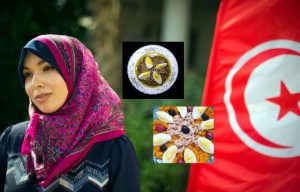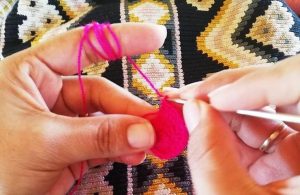This climbing plant is known as ‘African white ginger’ due to its spicy properties and the resemblance of its roots to ginger.
This plant is native to southern, central, eastern and western Africa, from Senegal in the west to southern Sudan in the east, and throughout most of the central and southern African countries. Mondia whitei has a large tuberous rootstock, and the basal portion of the stem is usually leafless.
The leaves are 3-6 cm long, opposite and elliptic-oblong, and spread out on a petiole. The flowers are borne in axillary inflorescences arranged in a panicle, with yellow and reddish-purple petals, and the fruit grows in pairs with spreading follicles that are velvety on the outside.
Mondia whitei is a plant found across different countries and cultures in Africa, and it is referred to by various names in different local dialects. For example, it is called ‘Mbombongazi’ in Swahili in Tanzania; ‘Mulondo‘ among the Bantu tribes in Uganda; and ‘Ogombo’ among the Luo tribes in Kenya. In fact, ‘Ogombo‘ means ‘to awaken life’s desires’ in the Luo language.
It is no wonder, then, that Mondia whitei is used to enhance appetite and as an aphrodisiac in African countries. In Cameroon, in West Africa, it is called ‘limte’, and in Malawi, in southern Africa, it is called ‘Gondolosi‘.
Mondia whitei can be easily propagated from seeds, which should be collected when the fruit begins to split open. The seeds can be sown fresh or stored for up to a year in normal room conditions. This plant has a long history of use in traditional African medicine for treating various health conditions, as well as being used as a spice in food and teas. The most important part of the plant used in traditional medicine is the root, which can be used fresh or dried; however, fresh roots are most commonly used.
The fresh or dried roots can be pounded, steeped in water overnight, filtered or decanted once the solids have settled, and used for medicinal purposes, such as stimulating appetite, treating gonorrhoea, postpartum bleeding, paediatric asthma, body pain, bilharziasis, jaundice, anaemia, asthma, allergies, headaches, and gastrointestinal disorders such as stomach aches, pains, constipation, indigestion, vomiting and anorexia.
Mondia whitei has also been used to treat tension, stress, and mental illness in some instances. African traditional healers use decoctions from the root of Mondia whitei to treat fits in children and stress and tension in adults.
Indeed, many African herbalists say that this plant can provide strength, energy and stamina, and improve mental clarity. Some herbalists recommend taking a decoction of the roots of Mondia whitei to improve sleep and ease labour pains.
The dry or fresh roots can also be added to meat or chicken stews as a spice to enhance the flavour of the stew and improve its preservation. Across Africa, Mondia whitei is best known for its aphrodisiac properties, which are said to enhance fertility, vitality and libido in men. Men are sometimes seen chewing the fresh or dried roots for this purpose.
The roots can also be used to treat urinary tract infections. Some traditional healers also reportedly use Mondia whitei to treat chronic diseases such as diabetes, hypertension and cardiovascular disease, which are beginning to emerge in African countries.
In many parts of Africa, both men and women regard Mondia whitei as a valuable medicinal plant. Fresh and dried roots of the plant are sold in open markets across Africa, in both urban and rural areas. Sometimes, small and medium-scale enterprise companies mill and pack the dry roots as herbal teas and spices to flavour food and soft drinks.
Mondia whitei tea is also used to treat general aches and pains. Apart from the roots, the dried leaves of Mondia whitei are powdered, mixed with food and consumed daily as a supplement to prevent various health conditions.
Scientific studies have found that Mondia whitei is rich in bioactive medicinal compounds such as sterols, triterpenes, alkaloids, saponins, tannins, flavonoids, glycosides and phenols. Its sweet, sugary and spicy taste is associated with vanillin compounds and sugars present in the plant.
Due to its extensive use in traditional African medicine, Mondia whitei has become an endangered species. In some areas, it has become rare in the wild throughout its distribution range. This is due to increasing exploitation of the plant by local communities for subsistence and commercial purposes.
In conclusion, M. whitei is an important medicinal plant for Africa and has the potential to contribute to the continent’s development. (Komakech Richard and Omujal Francis) – (CC BY-SA 3.0/Bart Wursten)






